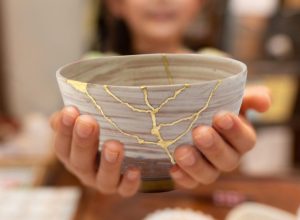 The Columbia City Yoga on-line Moving into Meditation class met this morning. We explored what it means to take Refuge: I we are drawn into relationship in which we offer our presence, care and support. We reflected on the many ways life becomes pilgrimage: a spiritual journey of transformation.
The Columbia City Yoga on-line Moving into Meditation class met this morning. We explored what it means to take Refuge: I we are drawn into relationship in which we offer our presence, care and support. We reflected on the many ways life becomes pilgrimage: a spiritual journey of transformation.
We considered how conflict can be an opportunity to restore relationships and build community building.
We drew on Kazu Haga’s book, Healing Resistance: A Radically Different Response to Harm. Kazu is a longtime practitioner and trainer in nonviolence and restorative justice. He described his very troubled adolescence and the profound experience of joining the 1998 Interfaith Pilgrimage of the Middle Passage. This pilgrimage lead to his commitment to nonviolence through restoring relationships and building Beloved Community.
 You can view the PBS Documentary: This Far by Faith (Segment: Rise Up and Call Their Names) and hear the pilgrims share their transformational journey. It shows the hard work of community building and healing.
You can view the PBS Documentary: This Far by Faith (Segment: Rise Up and Call Their Names) and hear the pilgrims share their transformational journey. It shows the hard work of community building and healing.
We heard Rosemerry Wahtola Trommer’s poem, Sacred Ground. This poem is a reminder that we are pilgrims on life’s journey and every step we take is holy.
We heard Bhavya’s poem, A Sense of Belonging.
Welcome. In last week’s class we recalled our good childhood memories as a way of self soothing and reducing stress. Our good memories are an inner resource we can draw on in times of difficulty. Our body’s stress signals can be a mindfulness bell calling us to pause when we need to breathe and feel. At the threshold of conflict we can consider our intentions and what will best serve understanding.
As a society, we’ve been experiencing nearly continuous conflict. I realize that we’ve been here before. One of my spiritual teachers, Roshi Joan Halifax, lived through the civil unrest during the Viet Nam war. In a recent talk she shared:
. . . You know, I came to Buddhism in the mid-60s just having my life raw and exposed, filled with anger toward my government. And I realized that there was a path that could change not only my life, but really the life of this world, even if only a few of us embraced it deeply. Not that I have been able to do that perfectly.
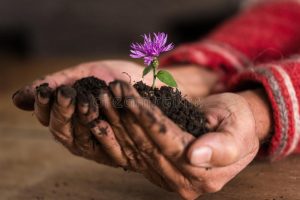 One of the fundamental teachings is the truth of suffering. As vulnerable human beings we naturally want to avoid suffering. The teachings of the Dharma encourage us to turn toward suffering – our own and others. We don’t have to do this alone. We don’t have to do it without support. We are encouraged to take Refuge. We can draw support from wisdom teachers, the wisdom of spiritual traditions and the community of spiritual friends. In taking Refuge we are drawn into relationship in which we, inevitably, offer refuge. We offer our presence, care and support. What does it mean for you to take Refuge?
One of the fundamental teachings is the truth of suffering. As vulnerable human beings we naturally want to avoid suffering. The teachings of the Dharma encourage us to turn toward suffering – our own and others. We don’t have to do this alone. We don’t have to do it without support. We are encouraged to take Refuge. We can draw support from wisdom teachers, the wisdom of spiritual traditions and the community of spiritual friends. In taking Refuge we are drawn into relationship in which we, inevitably, offer refuge. We offer our presence, care and support. What does it mean for you to take Refuge?
I’ve been reading Kazu Haza’s book Healing Resistance. It’s about social activism based on the principles of Kingian Nonviolence. He writes:
Doctor Martin Luther King, Jr. taught me that a commitment to nonviolence is a commitment to restoring relationships and building Beloved Community: A world where conflict surfaces as an opportunity to deepen in relationship, . . where people understand our interconnectedness and . . . all people have achieved their full human potential.
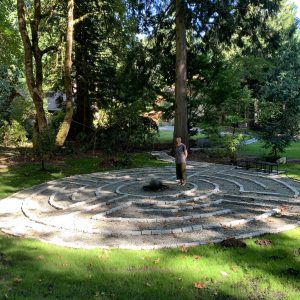 Kazu is a trainer and practitioner of nonviolence and restorative justice. He began learning the lessons of building beloved community at a young age. In the beginning of his book he tells his personal story of being a 17 year old Japanese immigrant living with his mother in Massachusetts. He struggled to cope with the stress of so much change. He dropped out of school, left home and was sleeping on friends’ couches when he heard about the 1998 Interfaith Pilgrimage of the Middle Passage (the Pilgrimage). This was a thirteen-month walk through the Eastern United States, the Caribbean, Brazil, Cape Verde, West Africa and South Africa. The pilgrims traced the history of slavery on foot and by boat beginning in New England and moving through the southern states. The organizers, Buddhist nun, Sister Clare Carter, and African American artist-activist, Ingrid Askey, believed that:
Kazu is a trainer and practitioner of nonviolence and restorative justice. He began learning the lessons of building beloved community at a young age. In the beginning of his book he tells his personal story of being a 17 year old Japanese immigrant living with his mother in Massachusetts. He struggled to cope with the stress of so much change. He dropped out of school, left home and was sleeping on friends’ couches when he heard about the 1998 Interfaith Pilgrimage of the Middle Passage (the Pilgrimage). This was a thirteen-month walk through the Eastern United States, the Caribbean, Brazil, Cape Verde, West Africa and South Africa. The pilgrims traced the history of slavery on foot and by boat beginning in New England and moving through the southern states. The organizers, Buddhist nun, Sister Clare Carter, and African American artist-activist, Ingrid Askey, believed that:
the slave trade and genocide of the Indigenous peoples this land are the original sins . . . that have never been healed and therefore the wounds are still open. Racism today is a direct result of those legacies and until we reconcile ourselves with the history of how the U.S. came the exist we will not resolve the challenges we face today.
Kazu took refuge in the Pilgrimage. He describes this experience as:
 . . . still one of the most diverse communities I’ve ever been a part of . . . we would walk 10-20 miles, sleeping on church pews and gymnasium floors. We walked to the sites of slave rebellions, plantations, lynching trees and prisons. Most nights the local community would host and feed us.
. . . still one of the most diverse communities I’ve ever been a part of . . . we would walk 10-20 miles, sleeping on church pews and gymnasium floors. We walked to the sites of slave rebellions, plantations, lynching trees and prisons. Most nights the local community would host and feed us.
And we argued. A lot. Here we were: sixty tired, sweaty and smelly people, uncovering the legacy of one of the worst forms of systemic, institutionalized violence to ever take place in our world. Some days, we simply didn’t have the capacity to take it in. . . . We were all committed to the idea of racial healing, but we did not have the skills to carry out such a massive undertaking.
. . . it was one of my earliest lessons about the importance of training. Desire and will alone cannot bring about the changes we need. We need training and skill. . . . A commitment to NV means a commitment to heal the open wounds in our heart, our families, our communities and our world.
 Kazu continues to work for belonging in Beloved Community: Beloved Community as a place of refuge and transformation. So the pilgrimage continues. Each of us stepping through our lives. Each of us bowing over sacred ground, as poet Rosemerry Wahtola Trommer writes:
Kazu continues to work for belonging in Beloved Community: Beloved Community as a place of refuge and transformation. So the pilgrimage continues. Each of us stepping through our lives. Each of us bowing over sacred ground, as poet Rosemerry Wahtola Trommer writes:
And if, as I now know, the closet
is sacred and the bare room
is sacred and the sidewalk
and classroom and the ER
are sacred, then I trip
into the teaching
that everywhere is sacred—
not only the church, but
the alley. Not only the mosque,
but the bench.
Not only the places in candlelight
where the air is pungent
and woody with myrrh.
I want to worship
at the shrine of everywhere,
want to know every inch
of this earth as an altar—
every walk, a pilgrimage.
Every step, a step
from holy to holy
to holy.
Our practice as pilgrimage: “Every step, a step from holy to holy to holy.”
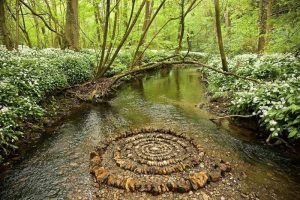 We aspire to recognize our goodness, to be present, to be kind and to care with compassionate wisdom. We build the energy to begin again and again in ways as small as following the breath and as large as companioning someone through suffering. We endeavor to practice belonging in ever widening circles of caring.
We aspire to recognize our goodness, to be present, to be kind and to care with compassionate wisdom. We build the energy to begin again and again in ways as small as following the breath and as large as companioning someone through suffering. We endeavor to practice belonging in ever widening circles of caring.
Let’s take a moment now to practice. Take a few deep breaths and slowly let them go. Sense your experience of coming into stillness. Explore how stillness can hold the your body. Notice what draws your attention: the sensations of weight, pressure, temperature, tension, relaxation.
Explore the experience of embodiment. Notice the places that are touching Earth and feel those connections – the bottoms of your feet; the back of legs and thighs; the two sit bones, the back of your head and spine if you are lying down. You can sense Earth in your bones – the bowl of your pelvis; the length of your spine; the round orb of your skull.
 You might notice areas of fluidity, movement and change. You can explore feeling breathing. Notice areas that are subtly moving – across your chest; between your ribs; your belly. Allow the body to settle and breathe. Let the breath accompany your practice freely. Poet W.S. Merwin: A little breath, breathe me gently, row me gently, for I am a river I am learning to cross. Find breath as a companion in which you can entrust your self. Let the self be nourished by the breath. Breathing. Caring presence. Offering refuge. Refuge holds the possibility of healing and solace; creates conditions in which compassion and wisdom awaken.
You might notice areas of fluidity, movement and change. You can explore feeling breathing. Notice areas that are subtly moving – across your chest; between your ribs; your belly. Allow the body to settle and breathe. Let the breath accompany your practice freely. Poet W.S. Merwin: A little breath, breathe me gently, row me gently, for I am a river I am learning to cross. Find breath as a companion in which you can entrust your self. Let the self be nourished by the breath. Breathing. Caring presence. Offering refuge. Refuge holds the possibility of healing and solace; creates conditions in which compassion and wisdom awaken.
I invite you – a pilgrim on life’s journey – to take refuge in the breathing body. You might tune into a sense of caring presence. Feel your body resting on Earth’s body. Become aware of how breathing sustains you. Earth. Breath. Making life possible. You might sense the subtle energy inside your body, around your body.
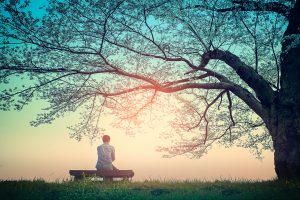 You may be aware of mind states. There may be calm and quiet. There may be planning or remembering. Contentment. Sadness. Fear. Peace. And there is feeling breathing. Sensing body. Caring presence. All part of life’s journey.
You may be aware of mind states. There may be calm and quiet. There may be planning or remembering. Contentment. Sadness. Fear. Peace. And there is feeling breathing. Sensing body. Caring presence. All part of life’s journey.
You can explore the qualities of stability, patience, spaciousness or other inner resources that enable you to be path of the present. You can begin again and again by experiencing body; body in relation to Earth’s body. You can be aware of Earth’s constant presence as the ground upon which you rest. As we practice these wholesome states we grow trust in ourselves. We give ourselves permission to find the refuge needed at a given moment.
So much of life is challenging. It can be difficult to find balance, ease or even hope for the future. We can reflect on those places we find refuge, safety and solace. What or who can you entrust yourself to? From thinking about love, see if you can feel this love and connection in your body. What sensations and emotions arise? See if you attune to them and savor this loving experience that you’ve embodied. Notice how they gradually change and begin to fade.
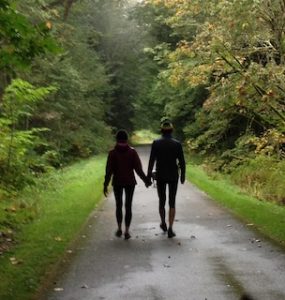 I invite you to reflect on the caring presence you can give yourself. We can take refuge in relationship with others and in our own embodiment and loving awareness. We can be a refuge for one another. Our acts of caring presence will likely live beyond us. We can imagine them like seeds that find root and grow.
I invite you to reflect on the caring presence you can give yourself. We can take refuge in relationship with others and in our own embodiment and loving awareness. We can be a refuge for one another. Our acts of caring presence will likely live beyond us. We can imagine them like seeds that find root and grow.
May our caring presence help us to be a sanctuary for one another. May our experiences of beginnings and endings help us to live with compassion and wisdom.
May we as the poet Bhavya, belong in our belonging:
A sense of belonging
We belong in our belongingness.
When conversations run deep,
deep and then deeper until words become echos and echos transform to a healing silence.
[When music brings us lyrics,
lyrics that stir the strings of our beings
in a rhythm that resonates, sometimes piercingly, sometimes gently, healing unfailingly.]
We belong in that belongingness.
When you acknowledge me in you and I acknowledge you in me.
When barriers turn into bridges,
When we help each other evolve.
When ego dissolves,
When love surrounds and peace engulfs,
When there is nothing to prove but a yearning to piece up the scattered blocks of the puzzle to see the whole picture.
We belong in our belongingness.
When you and I dissolve and a greater we evolves.

